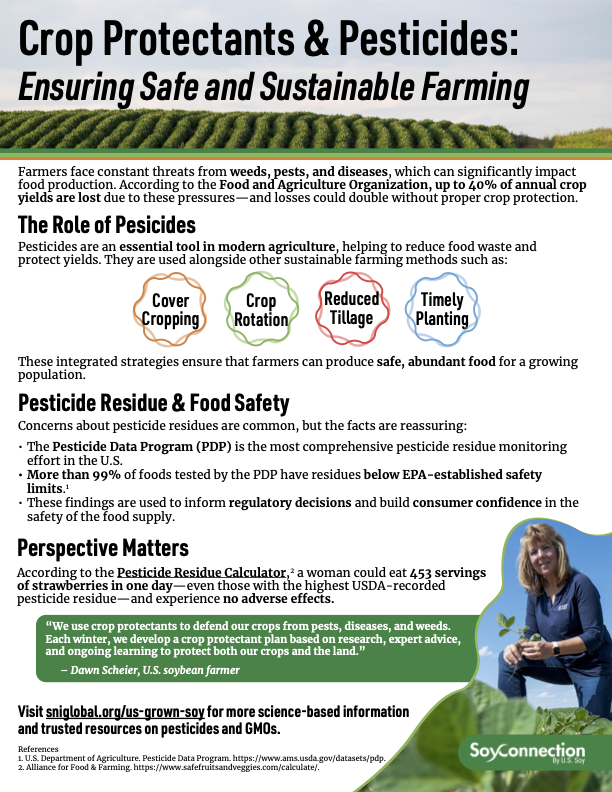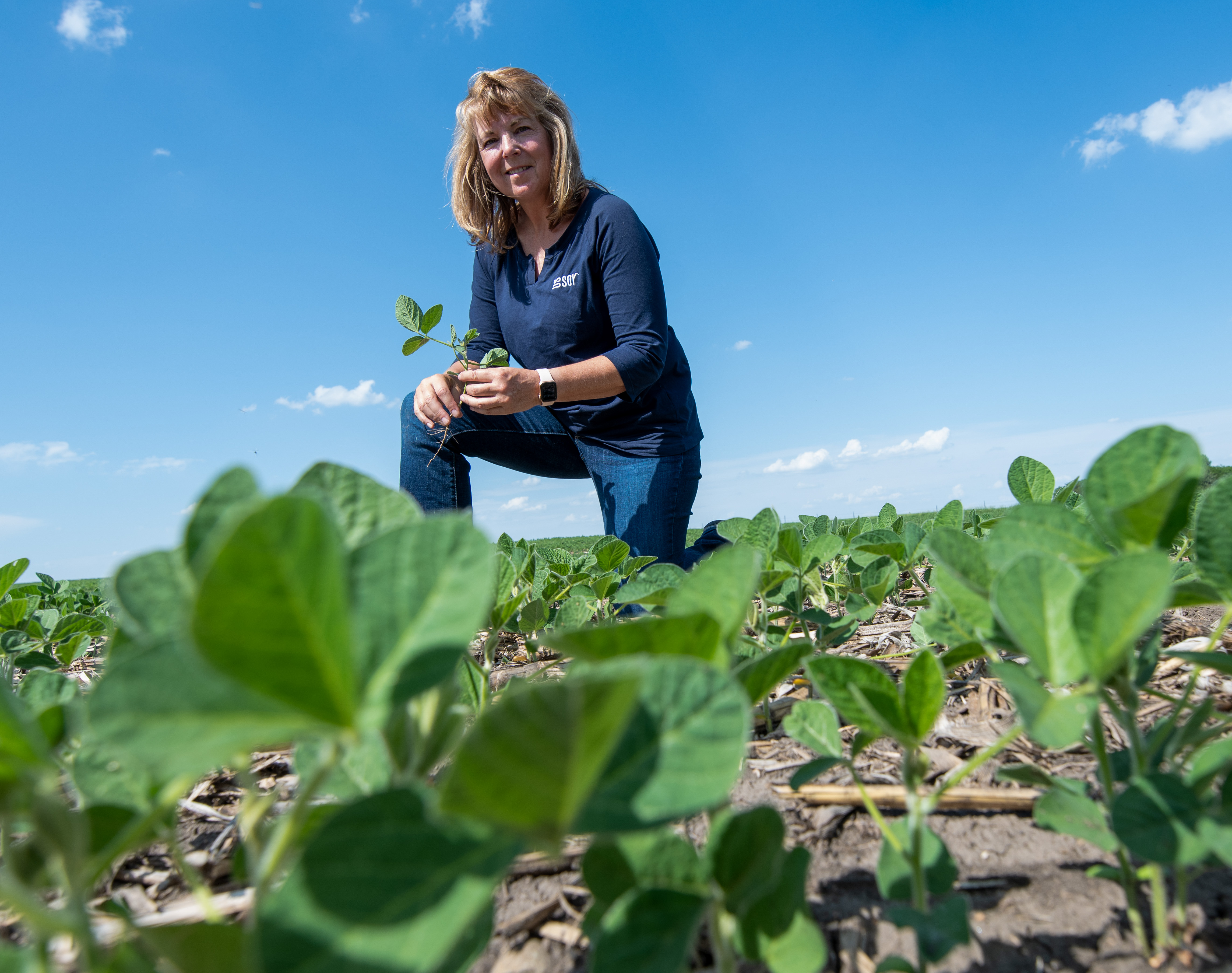By Dawn Scheier, U.S. soybean farmer
Soy farming has been central to American agriculture for generations, and Dawn Scheier of Scheier Farms in South Dakota has witnessed its evolution firsthand. What began with traditional plowing has transformed into a high-tech operation using artificial intelligence, precision tools, and sustainable practices. Discover how today’s farmers blend tradition with innovation to shape the future.
Q: How has farming changed over time in the U.S.?
A: "My family has farmed soybeans, corn, and small grains in South Dakota for four generations. The biggest change in my lifetime came in 1996 with the introduction of genetically modified seeds. At Scheier Farms, we’ve used genetically modified organisms (GMOs) to reduce pesticide use and minimize tillage, helping protect the soil. Many consumers don't realize how tightly regulated GMOs are in the U.S., requiring up to 20 years for approval from the FDA, EPA, and USDA. It's a major commitment, but it’s been a game-changer for our farming."
Q: What are crop protectants and how do you develop your crop protection plans?
A: "We use crop protectants, or pesticides, to safeguard our crops from pests, diseases, and weeds. At Scheier Farms, we create a crop protection plan every winter by attending seminars, staying updated on research, and consulting with our agronomist. Farming can be unpredictable, so we remain flexible and adjust the plan as needed to protect both the crops and the land."
Q: Why is soy farming important for both the economy and the environment?
A: "Soybeans are incredibly versatile, used globally for food, feed, fuel, and industrial products. Most of our soybeans go to animal feed, but some are used in human food. As a high-quality plant protein, soy provides all of the essential amino acids.1 And from a farmer’s standpoint, soybeans help with soil health, especially when we rotate them with other crops. On top of that, soybeans contribute $124 billion to the U.S. economy annually,2 creating jobs and supporting rural communities—making it a crop we’re proud to grow."
Q: What sustainable practices do you implement on your farm, and why are they important to you?
A: "Sustainability means growing efficiently while preserving the land for future generations. On our farm, we rotate crops, minimize tilling, and use precision technology to apply inputs where needed. We also manage runoff with grass waterways, protect fields with tree shelter belts, and put less productive land into the Conservation Reserve Program. It’s all about caring for the land so it can continue to support us and future generations."
Q: What changes do you envision taking place in the near future for soy farming?
A: “Most farmers will use artificial intelligence and remote sensing to precisely determine when crops need protection, eliminating guesswork and improving decisions from planting to harvest. We’ll also see more pest- and disease-resistant soybean varieties, and more farmers growing identity-preserved soybeans for specific health benefits. We’re just scratching the surface of what soybeans can do, and the science is only getting better.”
Q: What are some on-farm challenges you face today? What are on-farm challenges you are preparing for in the future?
A: "Our biggest challenge right now is rising costs while soybean prices drop, as we navigate uncertainty. Agricultural technology is advancing quickly, and keeping up requires both time and money. Looking ahead, our priority is to ensure farming remains viable for the next generation through smart, sustainable decisions."

Download Healthy Handout for Patients and Clients
Soy From The Farm
Join the Indiana Soybean Alliance to learn how soybeans journey from farm to table while exploring key topics like cover crops and soil health.
REFERENCES
-
Hughes GJ, Ryan DJ, Mukherjea R, Schasteen CS. Protein digestibility-corrected amino acid scores (PDCAAS) for soy protein isolates and concentrate: Criteria for evaluation. J Agric Food Chem. 2011;59:12707-12. https://pubmed.ncbi.nlm.nih.gov/22017752/.
-
The Economic Impact of the U.S. Soybeans & End Products on the U.S. Economy. The National Oilseed Processors Association (NOPA) and the United Soybean Board (USB). 2023. https://unitedsoybean.org/hopper/new-study-finds-u-s-soybean-industry-has-124-billion-impact-on-the-united-states-economy/#:~:text=The%20total%20economic%20impact%20on,the%20U.S.%20gross%20domestic%20product.
